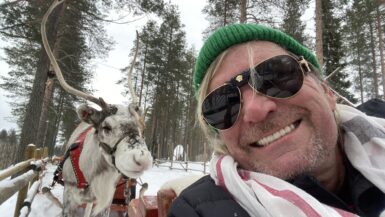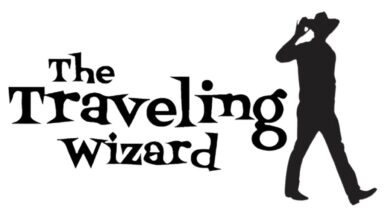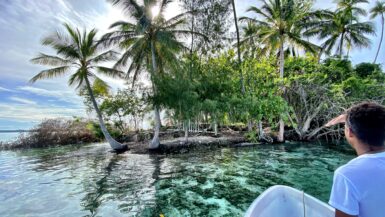When many Americans think of El Salvador, their first thought is of the civil war that ended 23 years ago or an earthquake they think they heard about on the news. El Salvador is often forgotten in the competition for vacation time because of the popularity of Cancun or nearby Costa Rica. Those destinations arguably have been developed much more, but if you’re looking to try someplace a little off the tourist grid, El Salvador might fit the bill.
As soon as you arrive in the airport you will notice the greenery of the rich soil and volcanoes dotted in the horizon. The capital is a little chaotic with never ending traffic and confusing streets, but once you are out of the city, El Salvador doesn’t disappoint. Less than an hour drive away, you can reach the country’s “double volcano”. It’s a volcano inside a volcano which sounds a little more exciting than it really is. Once you’re at the rim of the main crater, the baby volcano resembles a sand dune with a hole in the middle. The hike is not long, but the flora is beautiful. The higher altitude feels like someone set the air conditioning at the perfect setting. The park is full of wandering trails and picnic spots and is a great stop to unwind after battling traffic in San Salvador.
Salvador only has one UNESCO world heritage site and it’s called Joya de Ceren. Billed as the Pompeii of the Americas, it’s definitely worth a look. In reality, the only similarity between Pompeii and it’s American counterpart is the fact that it was covered by a volcano and essentially frozen in time. Because the city was covered in ash, it was preserved to the point that archaeologists can determine exactly what the natives were eating and doing at the moment of the disaster. There’s no giant pyramids or impressive buildings, but the wealth of historical information uncovered at this site has had a great influence over our knowledge of the people of this era. Nearby San Andres and Tazumal have more of a Mayan city look that you might be expecting.
Nearby Lake Coatepeque is a little gem tucked away in the volcanic crater of Santa Ana. It’s a great stop along the Panoramic Highway on the way to the Ruta de Flores, considered to be two of Salvador’s most scenic drives. Every restaurant along the rim of the crater has an amazing view of the lake and the picturesque town surrounding it. It’s no wonder that many locals use this lake as a getaway on the weekend or summer. You can rent a boat or a lake house if you’d like to stay for a few days.
One of Salvador’s biggest draws is the surfing area near La Liberdad. There are a dozen small villages that offer surfing lessons, accommodation and fun restaurants on the beach. It’s easy to spot Punta Roca, which translates into “rock point” because of the giant boulder jutting out of the ocean. The waves next to this natural surfing landmark are considered to be some of the best in the country. If you’re not a surfer, you can still enjoy the vibe of this sleepy little town that is non-touristy, but still has the facilities to give travelers what they need. There’s great seafood including the El Salvadorian favorite, black clams called “conchas” by the locals. They’re served immediately after prying them open. They’re so “fresh” that they wriggle when you squeeze lemon on them.If you can get past that, you’re in for an interesting treat. Every menu also includes pupusas, which is the most popular dish in the country. It may not sound delicious with a name like “pupusa”, but these thick corn tortillas filled with cheese, beans or other fillings are inexpensive, filling and can be quite yummy.
El Salvador might not be on the top of your list, but this underrated country packs a lot in a small amount of space and the Salvadorians couldn’t be more friendly and hospitable. If you collect countries, you can always use it as a stopover for a day or two with their national carrier, TACA airlines. Want to learn how to surf? This might be the perfect place to cross that off your bucket list.





Leave a reply
You must be logged in to post a comment.